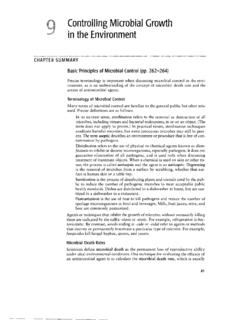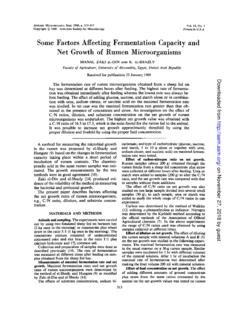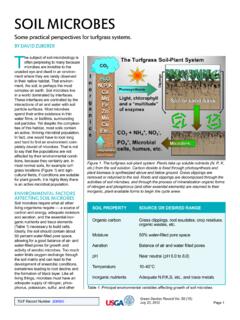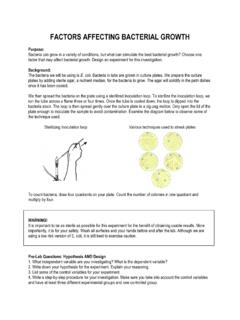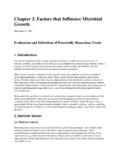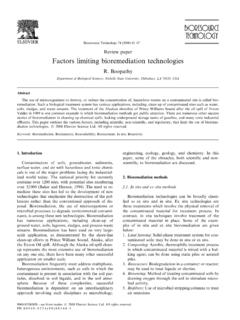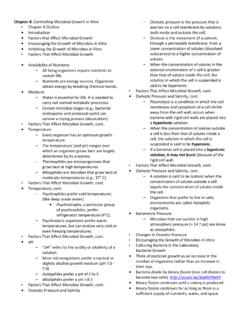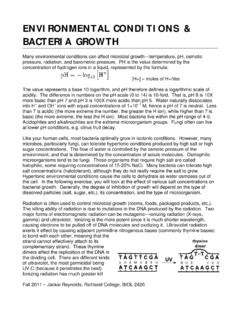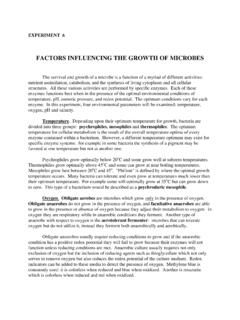Transcription of School of Dentistry - Birmingham
1 School of Dentistry The Oral Microflora habitats affecting growth oral bacteria examples in dental plaque in the oral flora with age endocarditis Contents Aetiology: The cause of phenomena (eg. disease) Pathology: Structural & functional changes caused by disease Pathogen(ic): Producing disease Pathogenesis: The mode of development of a disease Pathological: Relating to pathology or disease Commensal: An organism living in/on an organism of another species without injuring the host Parasite: An organism living in/on and at the expense of another organism (the host).
2 Equivalent to a pathogen Opportunist Pathogen: A commensal organism that can cause disease in certain circumstances Symbiosis: The mutally beneficial association between two organisms Aerobic Organism: requiring oxygen for growth and replication Anaerobe: Organism that grows and replicates in the absence of oxygen; not necessarily killed by oxygen Strict anaerobe: Anaerobe killed by oxygen Facultative anaerobe: Organism capable of growth and replication in the presence or absence of oxygen DEFINITIONS: Oral Microbiology: PD Marsh & MV Martin microbial habitats Habitat Comment Lips, cheek, palate Biomass limited by desquamation Some surfaces have specialised host cell types Tongue Highly papillated surface Acts as a reservoir for obligate anaerobes Teeth Non-shedding surface enabling large masses of microbes to accumulate (dental plaque biofilm) Teeth have distinct surfaces for microbial colonisation ( Smooth surfaces, pits & fissures etc) will support distinct micro flora due to their biological properties Gingival crevice / pocket Health (aerobic)
3 , disease (anaerobic) Oral Microbiology: PD Marsh & MV Martin Oral Microbiology: PD Marsh & MV Martin factors affecting growth of Microorganisms in the oral cavity Potential / Anaerobiosis (endogenous & exogenous (diet)) Defences (Innate & Acquired immunity) genetics (changes in immune response etc) agents & inhibitors Oral Microbiology: PD Marsh & MV Martin Identification / classification Characteristic Examples Cellular morphology Shape, Gram staining, size, associations Colonial appearance Pigmentation, haemolysis, shape, size Carbohydrate fermentation Acid or gas production Amino acid hydrolysis Ammonia production Pattern of fermentation products Lactate, acetate Preformed enzymes glycosidases Antigen Monoclonal/polyclonal antibodies to surface proteins DNA Base composition Pearson education GRAM POSITIVE = BLUE Streptococci.
4 Staphylococci GRAM NEGATIVE = RED/PURPLE E. coli, Fusobacterium, Porphyromonas Complexity of Micro flora Oral Microbiology: PD Marsh & MV Martin Important Oral Bacteria Positive organisms: Bulk of oral bacteria Rods (bacilli), cocci or irregular shape (pleomorphic) Oxygen tolerance varies from aerobes to strict anaerobes Most are fermentative Cell wall has thick peptidoglycan layer (penicillin has effect by interfering production of this layer) Three important genera: Actinomyces, facultative anaerobe Lactobacillus, produce lactic acid, facultative anaerobe, role in dentine caries rather than enamel caries Streptococcus facultative anaerobic cocci, produce lactic acid some implicated in caries Streptococci: Isolated from all sights of the mouth Large proportion of resident microflora Majority -haemolytic Strep mutans: Associated with caries Associated with bacterial endocarditis Strep salivarius: Colonise mucosal surfaces especially the tongue Strep angiosus.
5 Isolated dental plaque & mucosal surfaces Seen in maxillofacial infections, brain, liver etc Strep mitis: Opportunistic pathogens endocarditis Important of Streptococci in the oral and their properties Important Oral Species growth on hard surfaces Production of Cariogenic Endocarditis isolates Insol. Extracellular polysaccharide Acid S mutans + + + +++ + S sanguis + + + ++ ++ S mitior + + + + +++ S milleri + - + + + S salivarius - - + - - Distribution of Streptococci in the oral cavity Species Cheek Tongue Saliva Tooth - - +/- ++ S. mitior +++ +++ +++ +++ S.
6 Salivarius - ++ ++ - Actinomyces: Short pleomorphic rods with branching Major proportion of plaque Increase in gingivitis Associated with root caries 2. Gram Negative organisms Many Gram-negative bacteria found in the mouth, especially in established/subgingival plaque Cocci, rods, filamantous rods, spindle shaped or spiral shaped Range of oxygen tolerance but most important strict or facultative anaerobes Some fermentative, produce acids which other organisms use acids as an energy source, others produce enzymes which break down tissue Cell wall different to Gram positive with a thin peptidoglycan layer, has B-lactamase which breaks down penicillin.
7 Also has LPS/endotoxin Important Oral Bacteria Most important Gram negative bacteria: Porphyromonas: P. gingivalis major periodontal pathogen Prevotella: P. intermedia a periodontal pathogen Fusobacterium: F. nucleatum periodontal pathogen Actinobacillus/Aggregatibacter: associated with aggressive periodontitis Treponema: group important in acute periodontal conditions ANUG Neisseria Veillonella Clinical examples Flora of normal, healthy dentate mouth % (approx) Bacteria 85% Streptococci Veillonella Gram positive Diptheroids Gram negative anaerobic rods 5-7% Neissaeria 2% Lactobacilli 1% Staphylococci & Micrococci 2% Filamentous bacteria Remainder Other bacteria, fungi, protozoa & viruses Difference between mature supra & sub-gingival plaque Characteristic Supra gingival Sub gingival Grams stain Gram + or -ve Mainly Gram ve Morphotypes Cocci, branching rods, filaments & spirochaetes Mainly rods & spirochaetes Energy Metabolism Facultative.
8 Some anaerobic Mainly anaerobic Energy source Mainly ferment carbohydrate Many proteolytic forms Motility Few Many Pathology Caries & gingivitis Gingivitis & periodontitis Distribution of bacteria in smooth surface dental plaque over 3 week period Bacteria Distribution (%) 6 hrs 1 day 2 days 7 days 3 wks Gram +ve cocci 79 81 71 60 31 Gram +ve rods 8 7 10 20 56 Gram ve cocci 5 5 11 12 9 Gram ve rods 8 7 8 8 4 Oral flora changes with age Time during a lifetime MAJOR COMPONENTS & CHANGES IN ORAL FLORA Newborn Oral cavity sterile. Soon colonised by facultative and aerobic organisms; esp S.
9 Salivarius 6 months Flora becomes more complex & includes anaerobic orgs eg. Veillonella sp. & Fusobacteria Tooth eruption Increase in complexity. S sanguis, S mutans and A viscosus appear. New habitats include hard surfaces and gingival crevice. Child to adult Various anaerobes frequently found inc. Members of the Bacteroidaceae. Spirochaetes isolated more frequently Loss of teeth Disappearance of S mutan, S sanguis, spirochaetes and many anaerobes Dentures etc Reappearance of bacteria able to grow on hard surfaces Bacterial endocarditis Infective endocarditis (IE) is a rare condition with significant morbidity and mortality.
10 It may arise following bacteraemia in a patient with a predisposing cardiac lesion. In an attempt to prevent this disease, over the past 50 years, at-risk patients have been given antibiotic prophylaxis before dental and certain non-dental interventional procedures. Bacterial endocarditis is an infection in the lining of the heart or heart valves, that could damage or destroy these valves. According to the American Heart Association, bacterial endocarditis happens when bacteria in the bloodstream, called bacteraemia, lodge on heart tissue that has been damaged or on abnormal heart valves.
